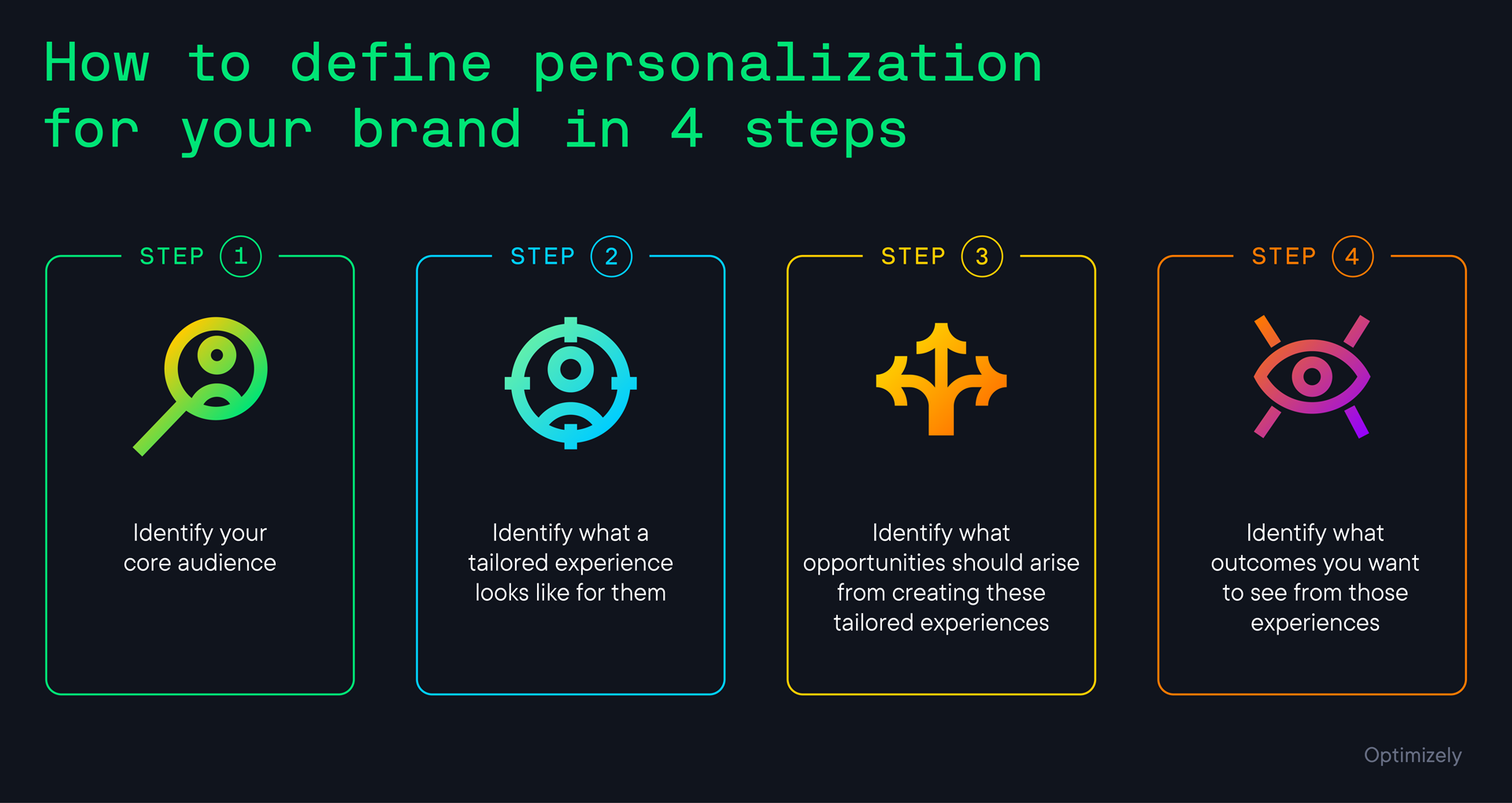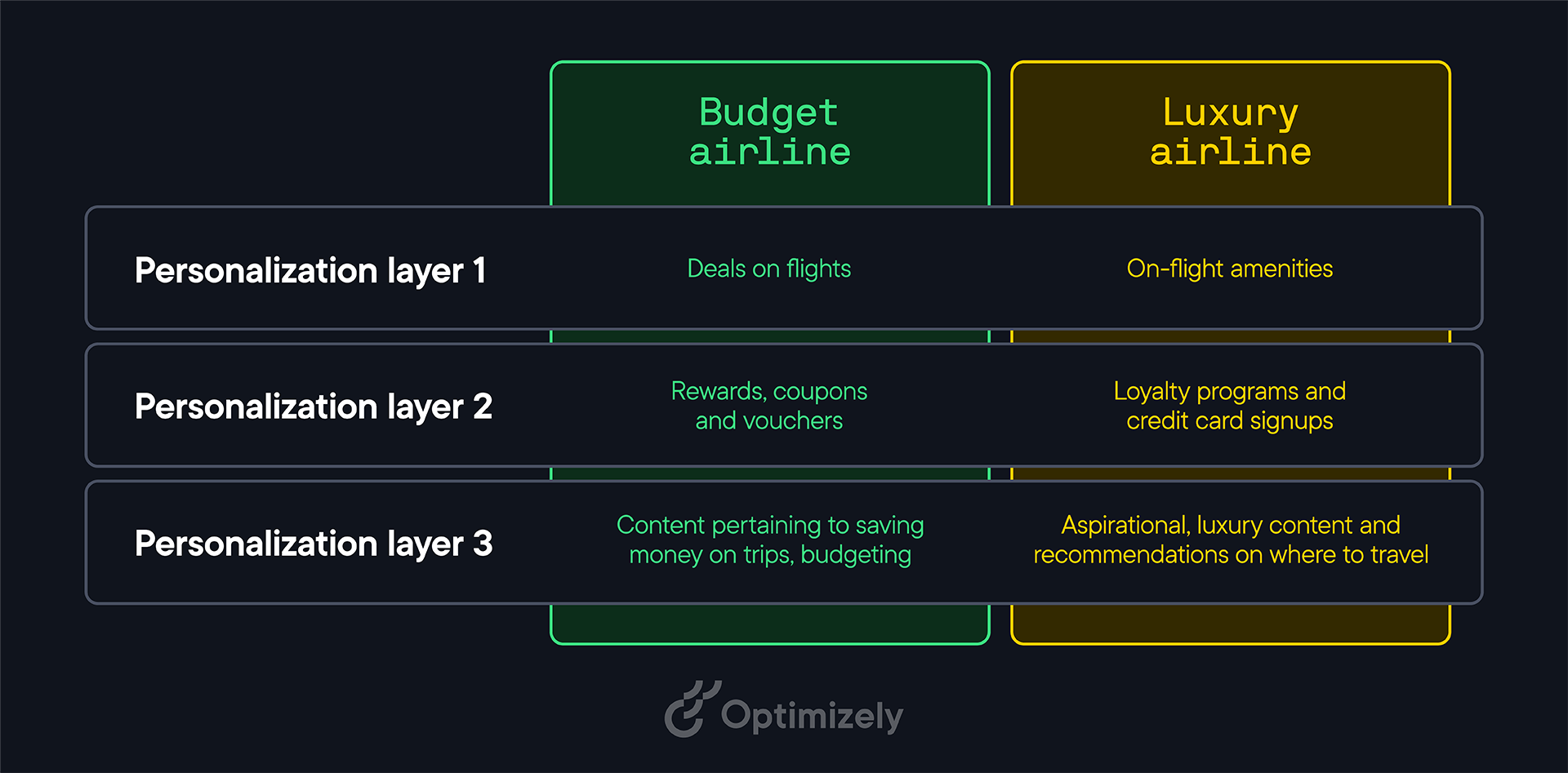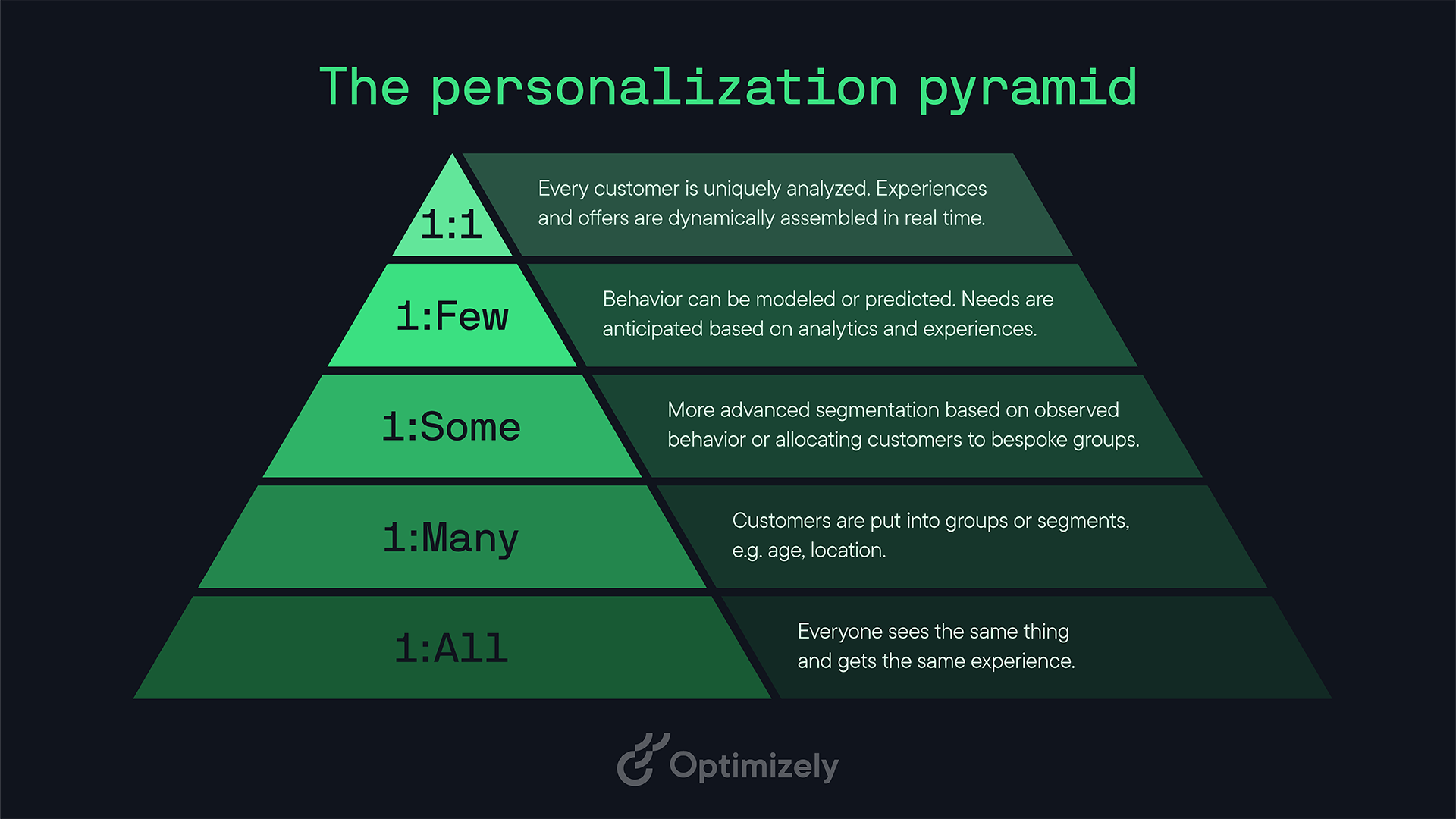On one hand, defining personalization is pretty easy.
You can just read about how to build a badass personalization strategy.
You can check out our glossary where we define personalization.
You can even head to our personalization product page.
Not interested in us self-promoting? Just Google “define personalization” and there you have it.

But hold on a minute...
In a recent Optimizely study that surveyed marketing, ecommerce, and IT executives worldwide, only 26% of executives reported having a unified definition of personalization throughout their organization.
So, what gives? Either three quarters of executives have never heard of Google (or one of the several dictionaries it routinely cites in queries), or there’s something else going on here.
The reality is that personalization is a complex concept that's difficult to define. It's highly dependent on who’s doing the personalizing and who they’re doing it for.
Personalization has many different dependencies, which makes each use case unique. It’s a team sport that requires multiple sets of capabilities all working together harmoniously to deliver the right outcomes.
But in order to form an effective strategy, you kind of have to know what you’re doing (we’re really dishing out the thought leadership here).
But first, what is personalization?
What is personalization?
Personalization is defined as the process of creating a tailored digital experience that is individually curated and optimized for each user or subset of users based on existing customer data and real-time behavior.
Specifically for websites and apps, it’s a digital optimization process for creating 1:1 experiences for visitors or users.
Some everyday examples of personalization include:
Content recommendations: When users interact with online content, your personalization engine reacts by surfacing additional relevant content with the goal of keeping them engaged and on site
Product recommendations: When customers make a purchase or place items in their shopping carts, the personalization engine makes recommendations on similar products or products that other customers with a similar profile have purchased
How to define personalization
Defining personalization is a critical first step in execution. Here's how you can leverage what you already know about your customers and your overall growth strategy to create a unified definition of personalization to guide your personalization strategy.
Let’s call this the...
Audience-centric hypothesis framework.
Which is just a fancy way of saying “put your core customers first”.
This is a framework to help create personalized experiences. It’s about zeroing in on your target audience, creating tailored experiences specifically for them, and identifying the outcomes of those experiences.

-
Identify your core audience
Let’s start simple. Try to encapsulate your core audience in one sentence. For example:
- Optimizely’s core audience is marketers
- Delta’s core audience is travelers
- Chase’s core audience is personal banking customers
Most companies will have a customer base that’s highly diverse. Creating 1:1 experiences will need to involve complex segmentation and a personalization engine that can capture specific user behavior and adapt in real-time.
But at the end of the day, most organizations rely on a small handful of core customer segments to drive business.
-
Identify what a tailored experience looks like for them
We know now that customers are expecting a tailored experience before they even land on your site or open your app. Ask yourself, what does a personalized experience look like for your customers?
That’s largely dependent on what’s important for your core customers and if you don’t know, how do you find out?
Some ways you can find out first-hand what’s important to your customers are:
- Customer feedback
- Surveys
- Behavior analysis
- First party data
You don’t need a sophisticated data infrastructure to discover what’s important to your customers, but you do need an efficient way of communicating with them.
Without providing an outlet for customer feedback or behavioral analysis, you won’t be able to uncover insights into what matters most to your core segments.
Once you discover or zero in on what’s important for your customers, you can then begin to define opportunities to deliver what they want.
-
Identify what opportunities should arise from creating these tailored experiences
Once you have a total understanding of what’s important to your core customers, you can then begin to identify opportunities that will result from 1:1 experiences.
For example, a luxury airline is going to have a different customer base than airlines that offer discount flights (duh). Therefore, the opportunities that will result in personalized experience will also be drastically different.
Budget-friendly airlines will optimize the web experience to surface cheaper flights, offer rewards and coupons, and surface relevant content that highlights ways to save money on trips.

Image source: Optimizely The luxury airline will see opportunities to emphasize amenities, upsell features, and surface relevant content that showcases more luxurious experiences.
The question then becomes when - When do you deliver these personalized experiences to your customers? Do you bombard them as soon as they land on your homepage? Do you send nurture emails? Do you wait until they make a purchase?
For each of these opportunities, you’ll have to define the experience in the customer journey that you believe will have the most impact. There are likely a few alternate experiences that might be relevant. Select the most likely ones and create those journey flows.
-
Identify what outcomes you want to see from those experiences
Ultimately, what do you want your core customers to do? Make a purchase? Talk to a salesperson? Read more content? That’s all going to depend on where they’re at in the customer journey.
For example, automotive companies are well aware that the customer journey for purchasing a new car is likely to take place over the course of several months with many different touchpoints being looped in at various stages.
Personalization is all about capitalizing on customer affinities, but those aren’t always clearcut, especially if you don’t have a personalization strategy in place. Moreover, customer affinity isn’t static; you need to adapt in real-time to their changing preferences.
And those preferences will change with each stage of the buyer journey. An effective way of illustrating this is with the personalization pyramid.

Image source: Optimizely Conclusion
Defining personalization for your brand is going to rely heavily on identifying your core audience, understanding what a tailored experience looks like for them, understanding the opportunities that personalization can create, and what the desired outcomes of those opportunities are.
- Last modified: 6/25/2025 8:20:12 PM
